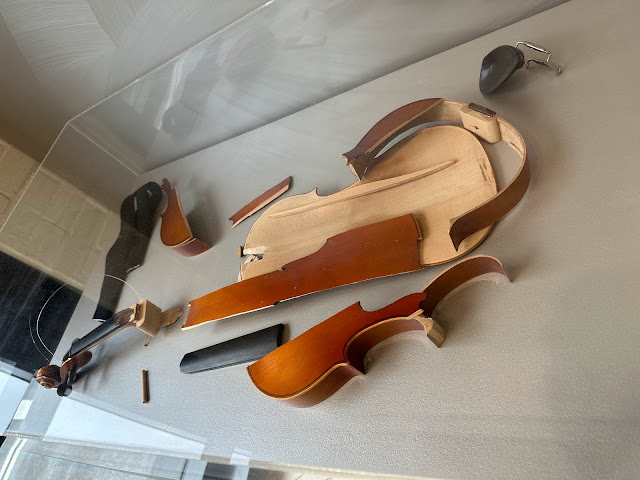ワタリウム美術館と言えば、現代アートの展覧会が多いが、今回のテーマは鈴木大拙。
通常は、2階から順に上に上がっていく構成が多いが、今回は、4階から下に下がっていくという、いつもとは少し違う構成の展覧会だった。
4階は、展示室に入るのに靴を脱ぐことが要求される。そこには畳が敷き詰められていて、座禅を連想させる。
中には、鈴木大拙の書や、外国語に翻訳された、鈴木大拙の書物などが展示されていた。
3階は、鈴木大拙にゆかりの、柳宗悦や岡倉天心、同郷の哲学者である西田幾多郎などの書などを展示。
そして最後の2階の展示室には、ジョン・ケージ、ナムジュン・パイク、ヨーゼフ・ボイス、サリンジャーなどの禅や鈴木大拙を連想させる作品や、南方熊楠の土宜法龍宛の書簡などが展示されていた。
鈴木大拙という思想家が、仏教界のみならず、哲学や文学、絵画、音楽など、様々な分野に与えた影響の大きさが、そうした展示品や作品で実感することができた。
Speaking of the Watari Museum, there are many exhibitions of contemporary art, but this time the theme is Daisetsu Suzuki.
Normally, there are many exhibitions that go up from the 2nd floor, but this time the exhibition had a slightly different structure, starting from the 4th floor and going down.
On the 4th floor, you are required to remove your shoes to enter the galleries. Tatami mats are laid out there, reminiscent of Zen meditation.
Inside, D.T. Suzuki's writings and other foreign language translations of D.T. Suzuki's books were on display.
On the 3rd floor, there are exhibits related to Daisetsu Suzuki, including works by Yoshimune Yanagi, Tenshin Okakura, and Kitaro Nishida, a philosopher from the same town.
Finally, in the exhibition room on the second floor, works reminiscent of Zen and Daisetsu Suzuki by John Cage, Nam June Paik, Josef Beuys, Salinger, etc., as well as Kumagusu Minakata's letters to Horyu Togi are displayed. was
Through these exhibits and works, I was able to get a real sense of the magnitude of the influence that the philosopher Daisetus Suzuki had not only on the world of Buddhism, but also on philosophy, literature, painting, music, and many other fields.





コメント
コメントを投稿